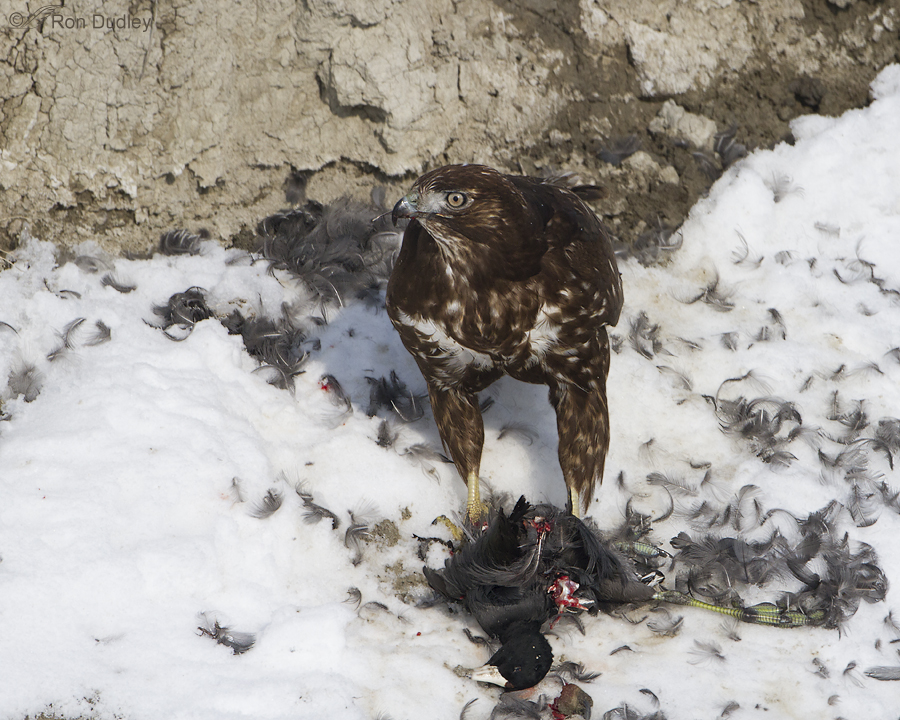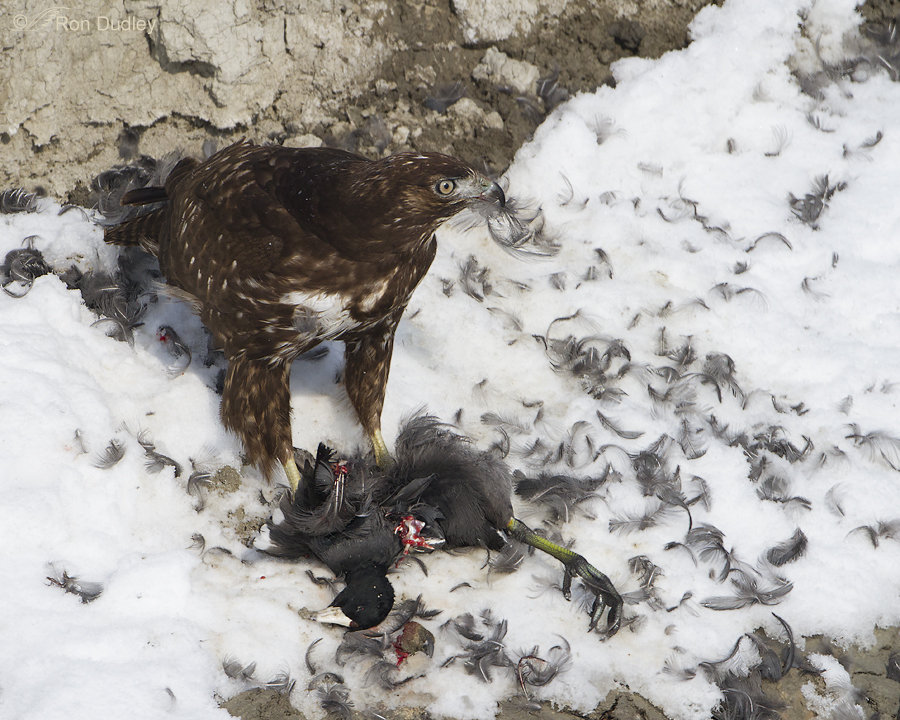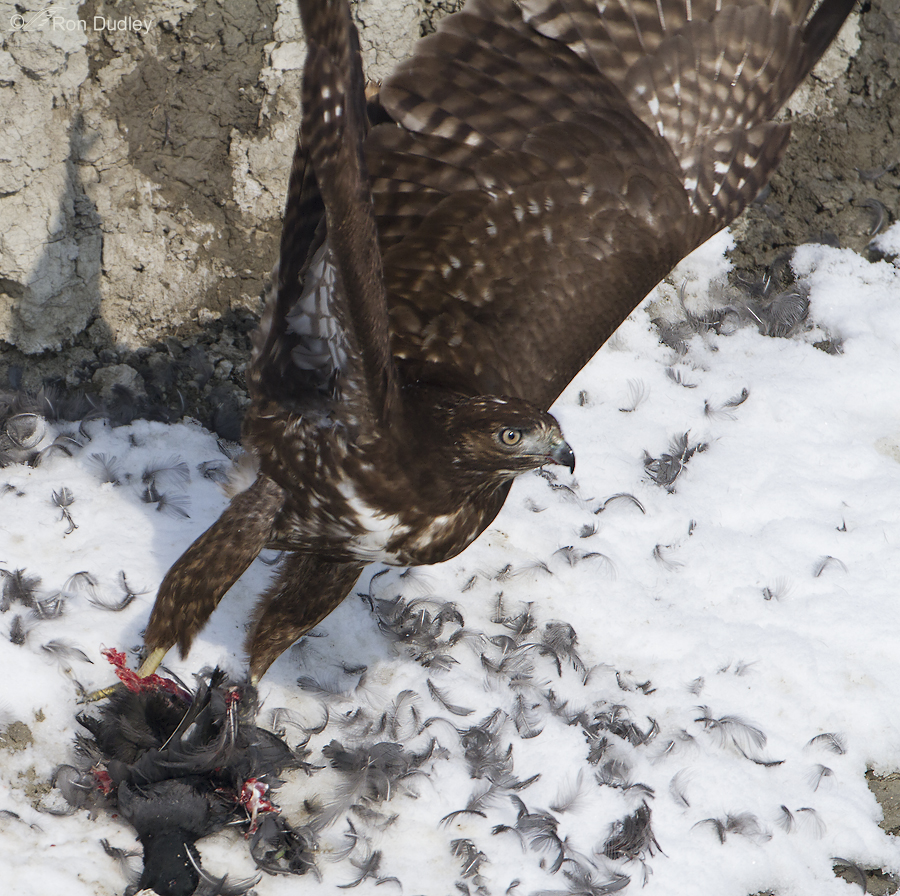On January 18 I photographed this Harlan’s Hawk at Farmington Bay WMA. Harlan’s is a relatively rare and very dark subspecies of the Red-tailed Hawk that breeds in Alaska and northern Canada but winters in the western U.S. and the Great Plains. I posted two other shots of this bird on January 20.

1/3200, f/7.1, ISO 400, 500 f/4, 1.4 tc, natural light, not baited, set up or called in
On this day I only had a few moments with the hawk before it took off.

1/2500, f/8, ISO 500, 500 f/4, natural light, not baited, set up or called in
Then, on January 22, we located the bird once again within just a few yards of where it had been four days earlier. This time it was at the bottom of a creek gully feeding on a freshly killed American Coot. The angle was steep and it’s not the most attractive setting but the behavior was interesting so I took lots of photos of this juvenile, if for no other reason than documentation of an unusual bird enjoying a meal.

1/2500, f/8, ISO 500, 500 f/4, natural light, not baited, set up or called in
The bird was only nervous with our presence for a few moments, then resumed eating its meal with enthusiasm. Here it has a beak-full of feathers that it had a difficult time shaking off.

1/2000, f/7.1, ISO 500, 500 f/4, natural light, not baited, set up or called in
I spent over 5 minutes with this hawk before another pickup passed by, noticed our big lenses pointed at “something”, and then backed up to see what it was. That was enough to…

1/2500, f/8, ISO 500, 500 f/4, natural light, not baited, set up or called in
make the bird nervous so it took off with the coot. The head of the hawk isn’t very sharp but I still thought the image was interesting enough to include here.
John James Audubon first collected this hawk in Louisiana in 1829, referring to it as “The Black Warrior”. I’m sure that the “warrior” part of that name was on dramatic display when it took down this coot.
Ron


Gteat shots as always and a very interesting bird! Thanks for sharing!
Thank you, Wally and Maria.
The last frame is dramatic, I like its eyes on that one.
Well, you made the most of a great opportunity while you had a chance! Great series of quality images, naturally. I really enjoy seeing the behavior aspect of the event.
Beautiful. Thank you for sharing these images of the Harlan’s. Not that I should be admiring the prey rather than the hawk…but I’m always amazed at the size of the coot’s foot in comparison to its body. Shot number three really shows this.
I had a similar experience to yours with some people stopping to see what we were looking at and photographing. We were observing and photographing a great horned owl that was resting in a tree not far from the road. The people were in a diesel truck so that when they paused and backed up the truck made a terrible racket–the owl flew off as the truck was backing up. These people did this to us numerous times in the same day until we decided to leave the park and go elsewhere.
The foot of a coot is always an attention grabber for me too, Sharon.
I share your apparent aversion to both diesel engines and rude people. I once had a hunter in a diesel pickup deliberately honk his horn as he passed by to scare off my bird. Neither the engine racket or the horn worked – the bird stuck.
It’s sad to think that there are such mean-spirited people that they would deliberately scare off your bird. What sad people they are.